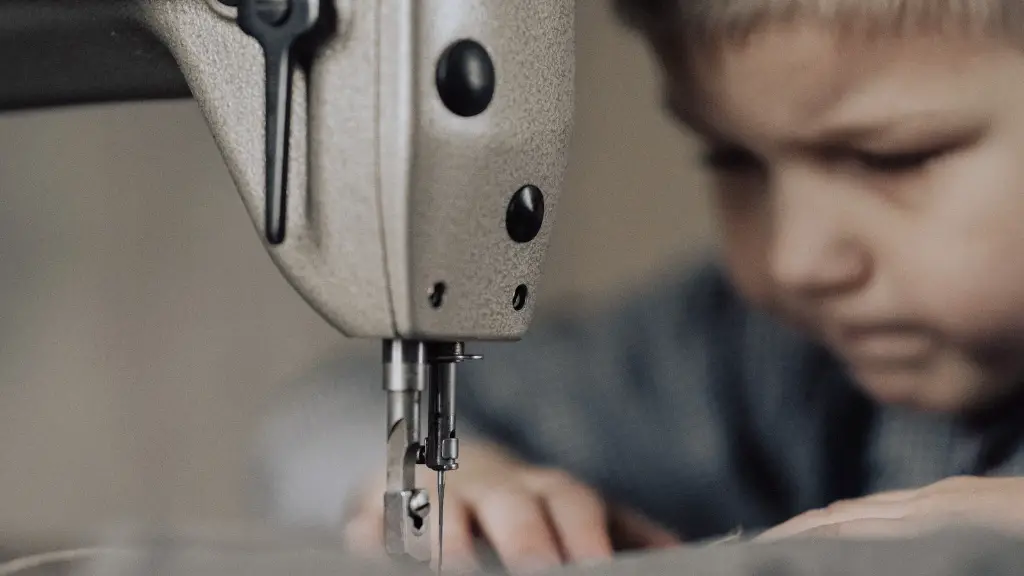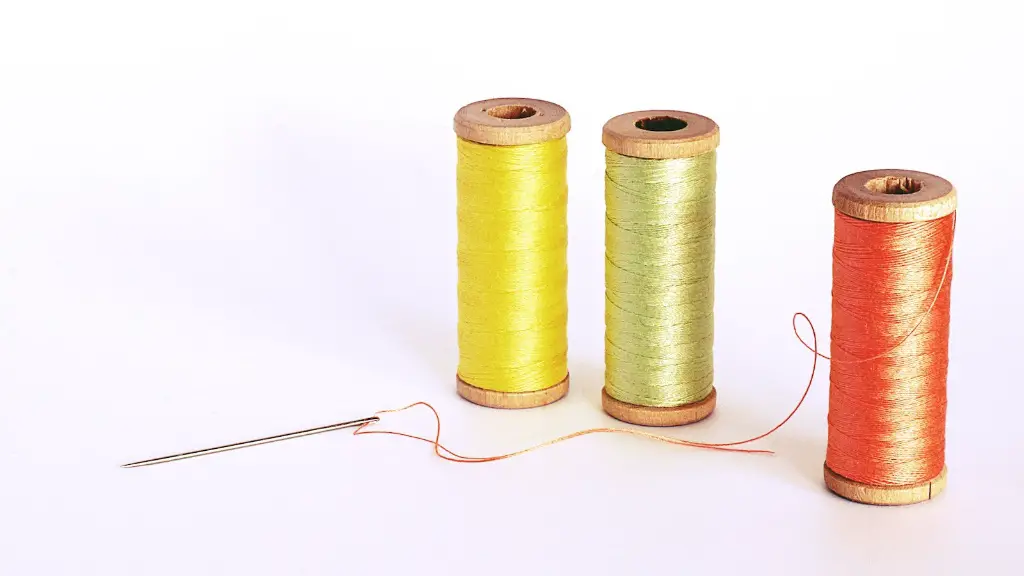Rapid Clothes Making
Prior to the invention of the sewing machine, clothes were made using hand sewing. This was a lengthy process, often taking days of painstakingly slow stitching. In 1846, the sewing machine changed the way clothes were made. This revolutionary invention enabled the efficient and quick production of garments, freeing up thousands of hours for workers. The invention allowed for the mass production of clothes, ultimately revolutionising the fashion industry and accelerating the rate of technological advances.
Since its invention, the sewing machine has greatly impacted the way clothes are manufactured. According to the International Textile Manufacturers Federation, in the year 2003, 97% of all garments were sewn by a sewing machine. In the same year, approximately 18 million industrial sewing machines were used in production. These numbers demonstrate the massive contribution of the sewing machine to the advancement of the clothing industry.
Not only has the sewing machine changed clothes production, it has also changed the way clothes look. Clothing has become increasingly more intricate and decorative with the use of patterns, beading and appliques. Without the invention of the modern sewing machine, these ornate styles may never have been created. In addition, it has vastly improved the quality of garments. Machines can produce stitches that are more uniform, tighter and stronger than hand sewing, meaning clothes are less likely to tear or unravel.
The modern version of the sewing machine is computerized and automated. This means that the machines themselves can be programmed to do more sophisticated stitches, allowing for further customization and refinement. Many of these machines are now used to create clothing for special occasions, such as wedding dresses. Some of these machines are also able to create intricate embroidery designs with minimal input from the user.
The invention of the sewing machine has resulted in some unexpected social impacts. For example, it has helped to empower women by having them take on roles in factory work as operators. It has also allowed them to become entrepreneurs by being able to offer custom clothing or even start their own clothing lines.
Innovations in Design
Designers are now able to create clothes faster and more efficiently with the help of the modern sewing machine. This means that clothing companies are able to produce more clothing in a shorter amount of time, ultimately leading to more cost-effective garments for consumers. Advanced machines are able to create clothing more accurately with fewer mistakes due to their sophisticated computer-controlled operation. This means that clothing produced is of a higher quality, which increases consumer satisfaction.
Modern machines are able to work with a wider range of materials, from leather to denim to silk. This allows for more diverse design options and thus more creative garments. Designers now have the ability to play with different textures, shapes and colours, creating unique pieces that would not have been possible before the invention of the modern sewing machine.
Designers are also able to produce limited-edition pieces and duplicate designs at a much faster rate. This has enabled them to increase their productivity while still maintaining a high level of quality in their pieces. The modern sewing machine has also allowed design companies to expand their reach by being able to produce clothing for an international market.
There are also specialised types of sewing machines for specific purposes. Automated flat-bed machines are often used for high-volume production and sewing machines designed for specific fabrics. For example, leather machines have a separate feed mechanism for leather and are designed to produce strong stitches. Similarly, machines designed for quilting have multiple layers of fabric to facilitate the quilting process.
Improvements in Technology
The modern sewing machine is small and lightweight. This has enabled them to be used more conveniently as well as in different environments, such as travelling tailors or even at home. The modern sewing machine is very easy to use, and many machines can be automatic, enabling the operator to simply press a button and let the machine work.
The invention of the on-board computer or the PLC (Programmable Logic Controller) has allowed for a greater control and precision in industrial sewing machines. This new technology has allowed for quicker operation, greater accuracy and more uniform stitches. In addition, sensors can now detect if fabric is being misaligned or if there are other errors.
Furthermore, sewing machines can be used for more than just apparel. The same technology can be used to create home décor items, such as curtains and cushion covers. Decorative stitching such as appliqués and embroidery can be used to make these items more attractive and unique. With an automated sewing machine, these items can be created more quickly, with fewer mistakes.
The invention of the remote-controlled machine has also allowed companies to cut down on their labour costs. These machines can be operated from afar, allowing companies to make fewer hires and save on costs. Additionally, these remote-controlled machines are also less prone to user error since they are computer-operated.
Cost and Environmental Impact
The efficiency and versatility of the sewing machine has also led to a decrease in the costs of manufacturing clothes. It has not only allowed clothing companies to be more cost-effective in their production, but also reduced the amount of materials needed to create the same garment.
Moreover, the increased production speed of clothing with the help of the sewing machine has also helped reduce wastage. This is because companies are able to produce only exact amounts of clothing needed without having to worry about over-producing or under-producing. In addition, the modern sewing machine has a longer lifespan compared to manual machines, as production is no longer dependent on the physical strength of the operator.
The sewing machine has also decreased the amount of time and effort workers have to put into creating garments. This has led to improved safety in garment manufacturing, as workers are no longer subject to the dangers associated with hand sewing such as hand fatigue and repetitive motion injuries.
Finally, the sewing machine has also enabled companies to create clothing with fewer production steps. This reduces the amount of energy and resources used in clothing production, further helping in minimising environmental impact.
Uses Beyond Apparel
The sewing machine has a wide range of applications beyond apparel. It can be used to create covers and padding for furniture as well as to re-upholster furniture. It can be used to create rugs, curtains and other items for the home. In addition, the sewing machine can be used for more intricate projects such as quilting and creating intricate embroidery designs.
The use of the sewing machine is not limited to the fashion industry. It has also found its way into other industries, such as medical and automotive. In the medical field, sewing machines are used to create prosthetics, medical scrubs and other medical clothing items. The sewing machine is also commonly used to create or repair upholstery in cars.
The invention of the sewing machine has made countless tasks easier, faster and more efficient. Its use goes beyond apparel, into industries and applications where a great amount of precision is required. The sewing machine has made the production of clothing and other items faster, cheaper, and more reliable.
Evolution in the 21st Century
The sewing machine has come a long way from its humble beginnings and continues to evolve to meet the needs of modern society. With the introduction of computerised machines, the possibilities for customisation are endless. Clothing companies are now able to produce customised, one-off pieces with an unprecedented level of detail and accuracy.
Moreover, industrial sewing machines are now able to work with a wider variety of materials, from synthetic fabrics to leather. This allows for clothing items to be created that would not have been possible before this technology. It has also enabled clothing companies to create bespoke pieces, or limited-edition items that cannot be duplicated.
Many sewing machines are now made with sustainability in mind. Manufacturers are now focusing less on disposable machines and more on long-lasting machines that demand less energy and produce less waste. This has helped to reduce the environmental impact of the clothing industry, and encourages companies to focus on sustainability.
In addition, the sewing machine has enabled clothing companies to be more efficient in their production, resulting in cheaper and faster delivery times to their customers. With the help of the modern sewing machine, clothing companies are now able to produce clothes quickly, efficiently and with a minimum of waste.
Benefits to Humanity
The invention of the sewing machine has greatly benefited humanity. It has enabled the production of clothing and other items more cost-effectively and at a faster rate. It has increased safety in garment manufacturing by reducing the amount of labor and human effort needed. It has also enabled designers to create more intricate and creative pieces with a higher level of detail and accuracy than ever before.
The modern sewing machine has also enabled clothing companies to reduce their environmental impact by using fewer materials and reducing energy consumption. This has allowed the clothing industry to become more sustainable, and encouraged companies to focus on sustainability in their production.
Finally, the sewing machine has enabled workers to become entrepreneurs by being able to produce clothing items or start their own clothing lines. This has allowed individuals to express their creativity and make money while doing something they love. The sewing machine has enabled a whole new realm of possibilities and brought new opportunities to countless people around the world.





